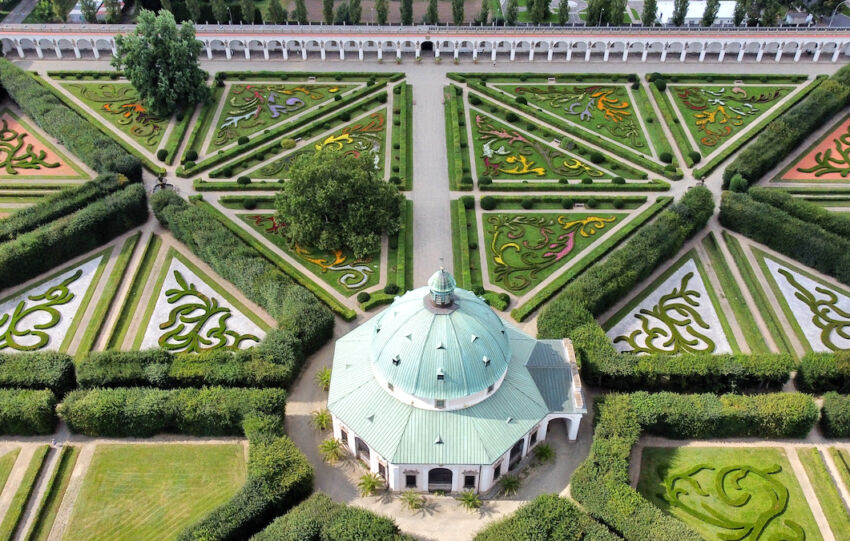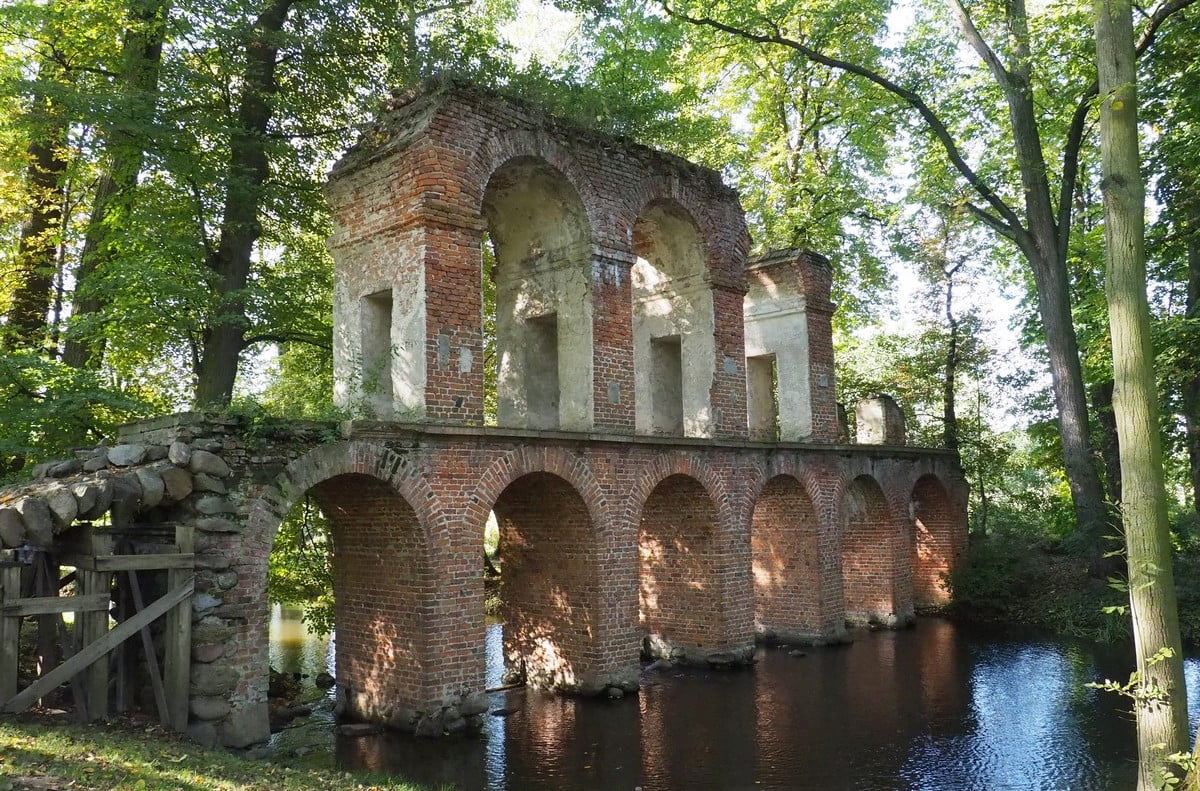Share This Article
In the heart of Slovakia, between Banská Bystrica and Zvolen, lies a remarkable monument – the wooden church in Hronsek, listed as a UNESCO World Heritage Site. This extraordinary church, built in the 18th century without a single nail, impresses not only with the craftsmanship of its builders but also with its atmosphere of peace and spirituality. It is one of the most valuable sites on the route of Slovakia’s wooden churches, where the history of Protestantism and traditional folk architecture blend into a harmonious whole.
Hronsek – Location and Access
The church in Hronsek is located in a small village situated between Banská Bystrica and Zvolen, in central Slovakia. The area is exceptionally picturesque – the village stretches along the Hron River, surrounded by green hills and forests. Reaching Hronsek is relatively easy, making the church a convenient stop along a travel route through the region.
You can get there by car via national road No. 69, which connects the nearby cities of Banská Bystrica and Zvolen. The distance from Banská Bystrica is around 13 kilometres, which takes just about 15 minutes by car. If you are travelling from Bratislava, allow around 2 hours; from Kraków – a little over 3. The village also has a train station on the Banská Bystrica – Zvolen line, making Hronsek accessible by rail as well. This is a good option for travellers who prefer not to drive and would like to enjoy the scenery from the train window.
Once in Hronsek, finding the church is easy – signposts lead to it from the main road. It stands in the second row of buildings. There is a small car park next to the church, and the grounds are well marked.
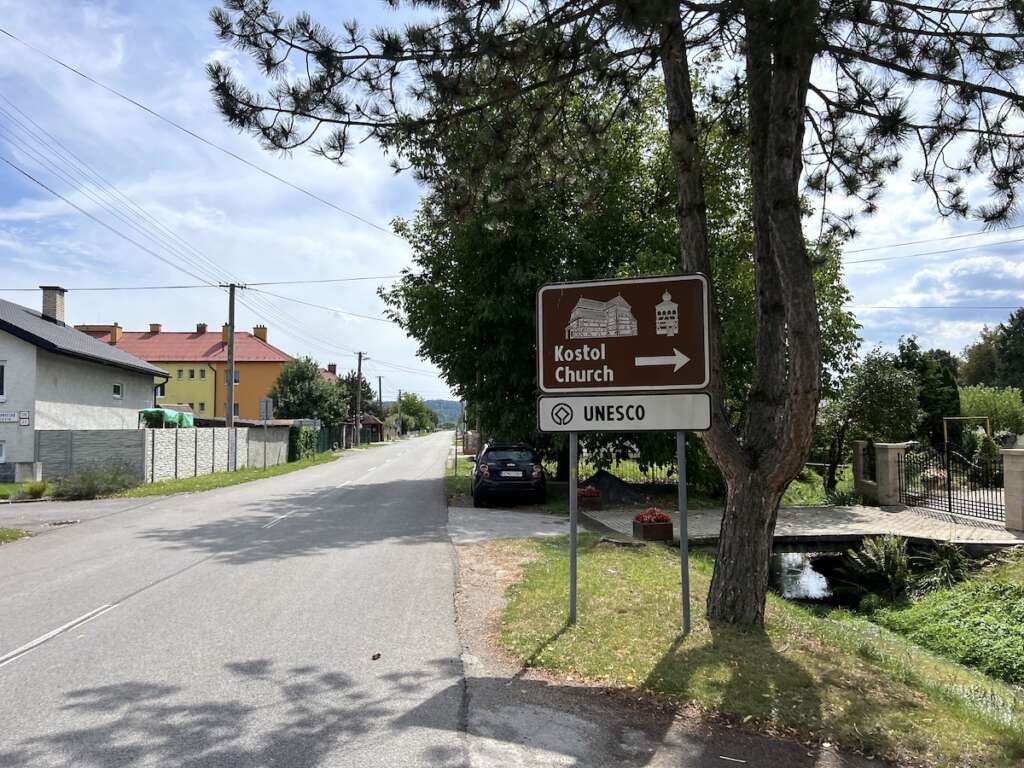

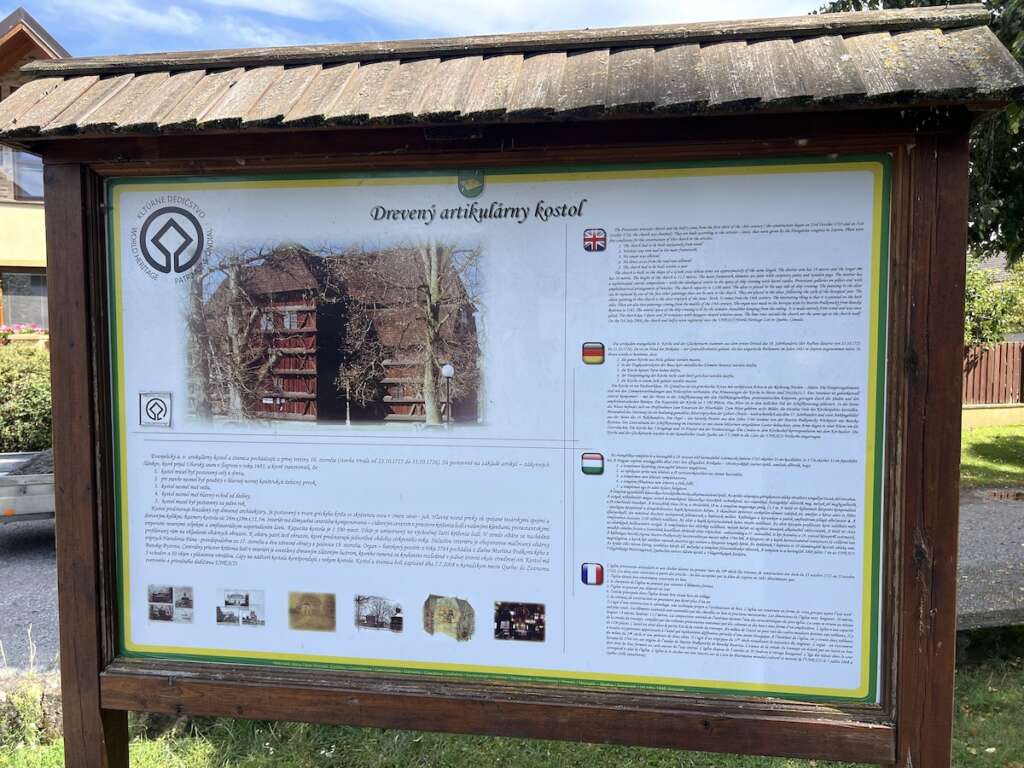
Admission and Opening Hours
As a UNESCO-listed heritage monument, the church in Hronsek is open to visitors for most of the year. Apart from July and August, the church is opened upon prior request (you can do this by sending an email to [email protected]). During the mentioned summer months, the church is open daily from 10:00–12:00 and 13:00–17:00.
Entry to the church is ticketed, though the price is symbolic – €2 for adults, with free admission for children. All proceeds support the upkeep and preservation of the church’s unique wooden structure. For organised groups, it is possible to arrange a guide who will not only explain the history of the building but also speak about local Protestant traditions. As in other similar churches I have visited, an audio recording presenting the history of the site is played inside.
It is worth noting that Protestant services are still held in the church, giving it an authentic, living character. Visiting during worship is not possible, so it is advisable to check the schedule of services and events in advance. Contact details and updates can be found on the Hronsek website.

History of the Church
The history of the church in Hronsek dates back to the first half of the 18th century. It was built in 1725–1726 as a response of the local Evangelical community to the restrictions imposed by the Habsburg authorities under the so-called “Articles of Sopron.” These regulations allowed Protestants to build churches, but only from wood, without towers, and without using nails. Additionally, they had to be constructed outside the village centre and completed within a single year.
Despite these restrictions, the Evangelicals of Hronsek created an extraordinary structure – a wooden church with a Greek-cross layout, capable of accommodating up to 1,100 people. The amphitheatrical interior layout ensures that the altar is visible from every seat.
Thanks to continued care and maintenance, the church in Hronsek, along with other Protestant wooden churches in the Carpathian region, was added to the UNESCO World Heritage List in 2008. Since then, interest in the site has grown among both Slovak and international tourists.

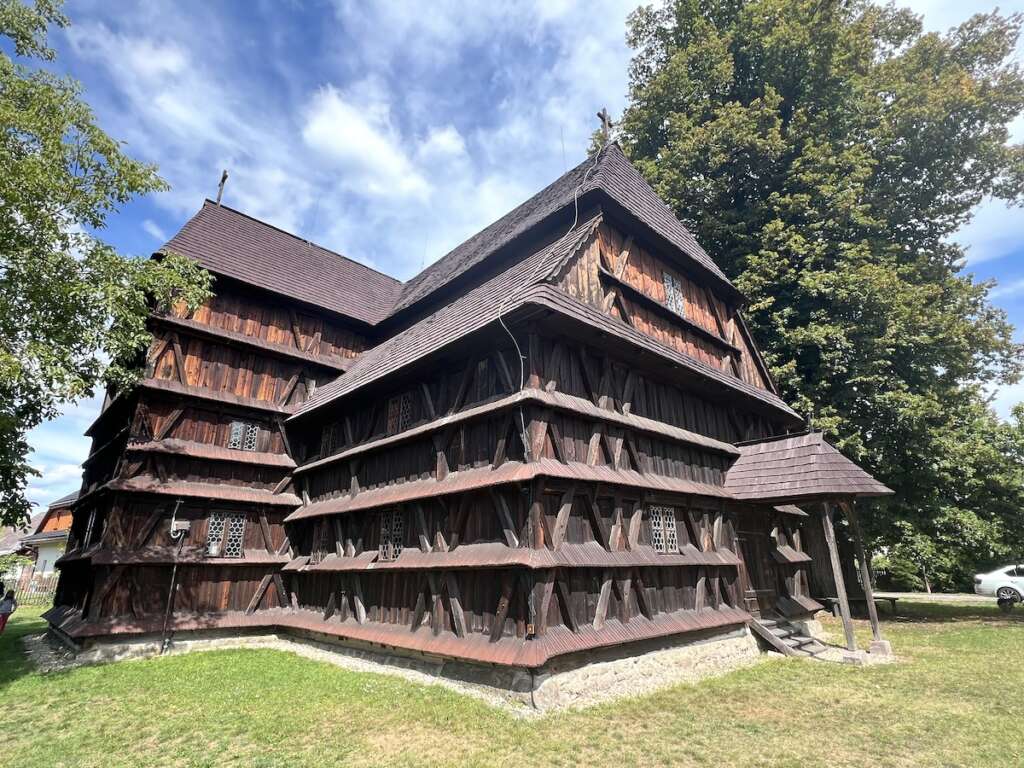
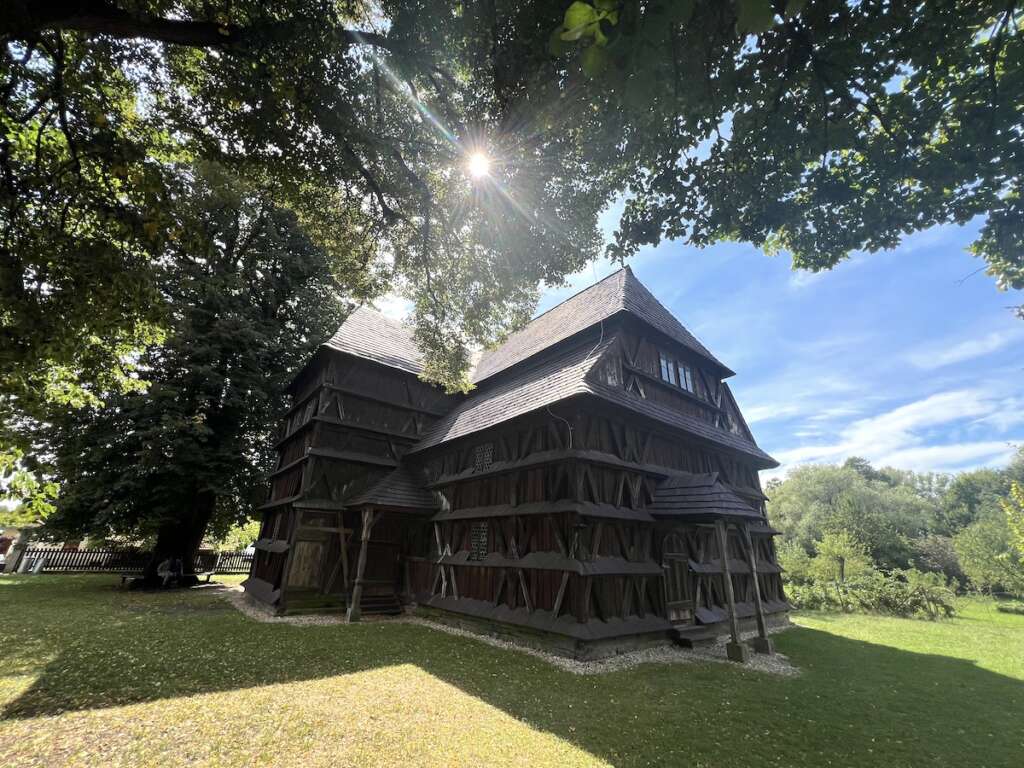
Current State and Visiting the Church
Today, the church in Hronsek looks excellent, thanks to many years of conservation work. The entire structure has survived in its original form, with only the roof shingles renewed periodically and the wood protected with traditional treatments. The interior, simple yet harmonious, makes a strong impression with its unity and balance. Wooden pews, galleries, and the altar form a coherent whole.
The Baroque main altar by Samuel Jurkovič is decorated with rich ornamentation featuring acanthus leaf motifs. At its centre is the painting Pentecost by Samuel Mialovič from 1771, accompanied by a crucifix from 1739. Other works by Mialovič have also been preserved and are rotated according to the liturgical calendar. The wooden 18th-century pulpit and the 1726 baptismal font are decorated with acanthus motifs, and the small organ from 1764, crafted by Martin Podkonický, is unusually positioned above the altar.
One of the church’s most unique features is its exceptional acoustics – a reason why sacred and choral music concerts are held here. Cultural events aimed at promoting the history of Protestantism in Slovakia also take place regularly.
Exploring the church is not only an opportunity to admire its architecture but also to learn about the difficult history of Protestants in Central Europe. A walk through the interior allows visitors to appreciate the mastery of historical carpenters – every beam and structural detail holds significance.
Be sure to climb up to the gallery – it offers the best view of the Greek-cross layout and the impressive interior space hidden behind the church’s modest exterior.
Visitors will also find informational materials in several languages, and during the summer season volunteers often assist, sharing stories about the building. A visit typically takes 20–30 minutes, though it is worth staying longer to enjoy the tranquility and silence that define this place.
Right next to the church stands an 18th-century wooden bell tower. This square-shaped building with a four-sided roof is topped with a distinctive onion-shaped dome.

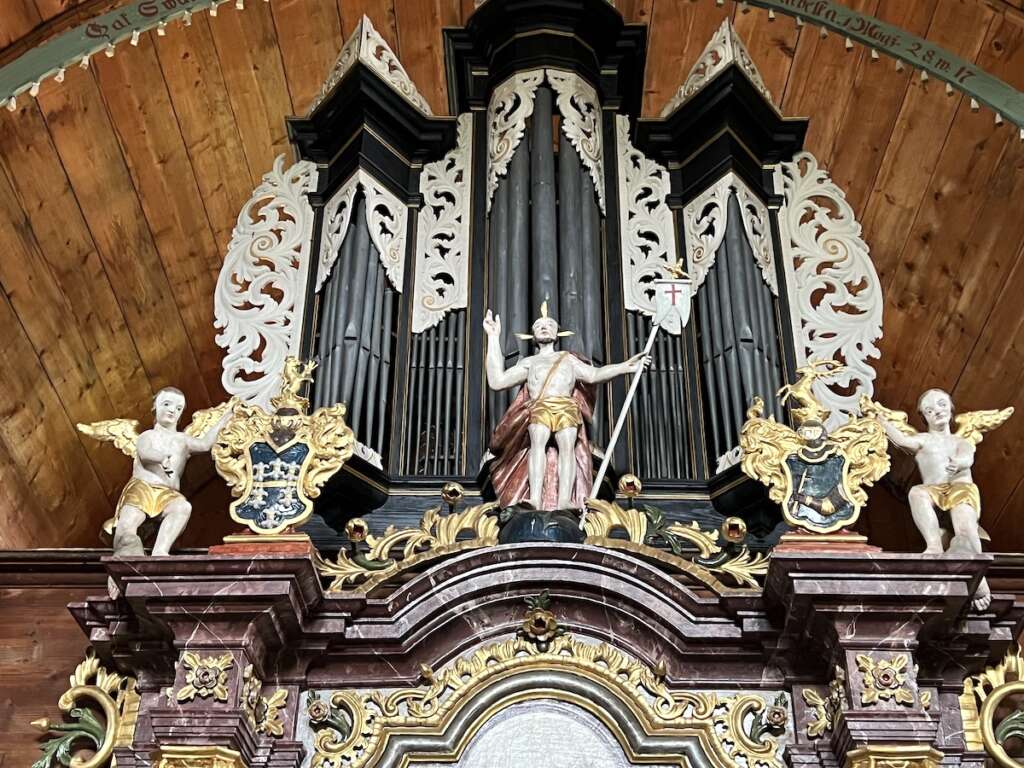



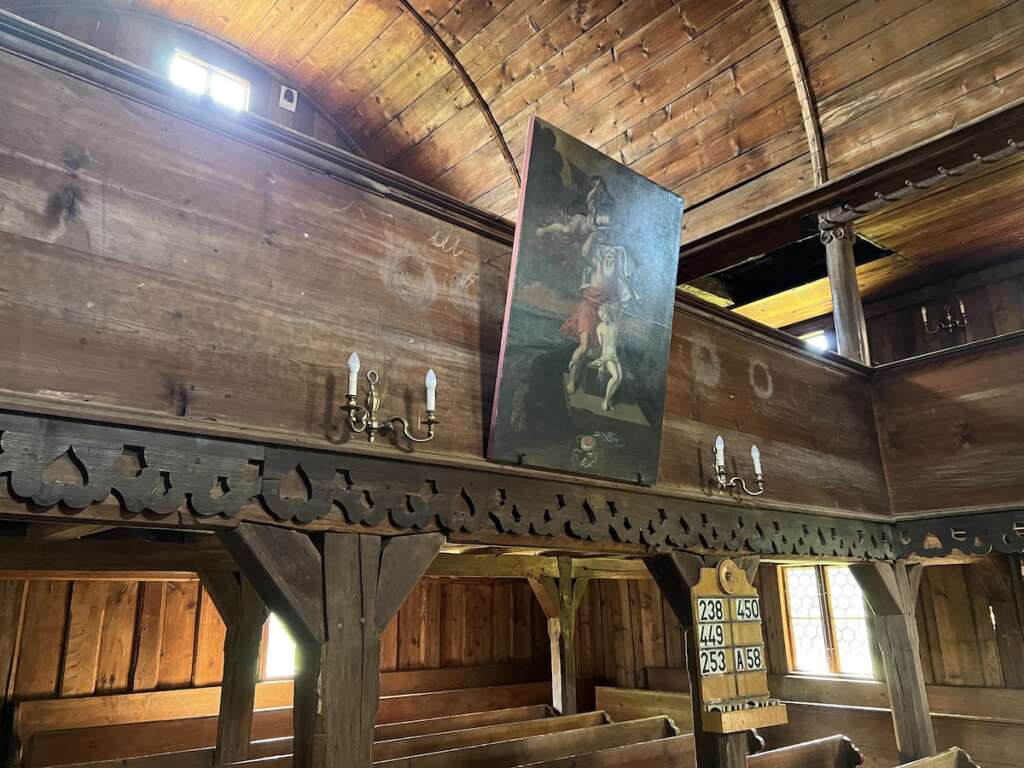
Other UNESCO Wooden Churches in Slovakia
The Hronsek church is one of eight wooden churches in Slovakia listed as UNESCO World Heritage Sites (Wooden Churches of the Slovak Carpathians). Others can be found in Kežmarok, Leštiny, and Tvrdošín. Each of them is different: two are Roman Catholic, three are Protestant, and the remaining three are Greek Catholic churches. Visiting Hronsek offers a perfect opportunity to explore more of these architectural treasures.
Poland’s Churches of Peace
The church in Hronsek has its “counterparts” in Poland. The best-known examples are the Churches of Peace in Jawor and Świdnica, which were also built as a result of political and religious compromises in the 17th century. These monumental wooden churches are likewise UNESCO-listed and remain striking examples of craftsmanship and endurance.
Comparing Hronsek with the churches in Lower Silesia shows how Central Europe shares similar historical experiences – struggles for religious freedom, creativity amid restrictions, and an exceptional ability to combine practicality with beauty.
The Water Castle Nearby
Just next to the church lies another local attraction – the so-called “water castle” of Hronsek. This 17th-century Renaissance residence, built on a square plan and surrounded by a water-filled moat, once served defensive purposes while also functioning as a noble estate. Its charm and unusual location continue to captivate visitors today.
The castle can be admired from the outside, and the surrounding area is perfect for photos and leisurely walks. It complements a visit to the wooden church beautifully – in a single location, two contrasting architectural styles stand side by side: a modest Protestant wooden church and a Renaissance aristocratic residence.
Looking through the windows, you can notice ongoing renovation works. Perhaps in a few years, the interiors will also be accessible to visitors. The surrounding garden has already been restored and looks impressive.
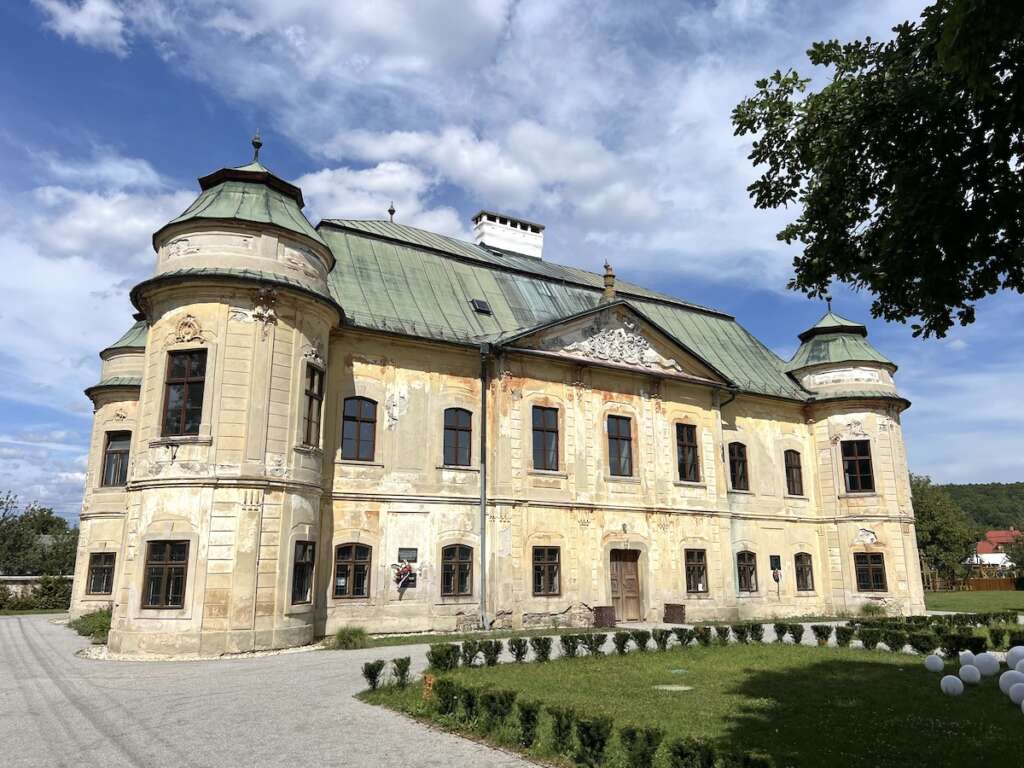

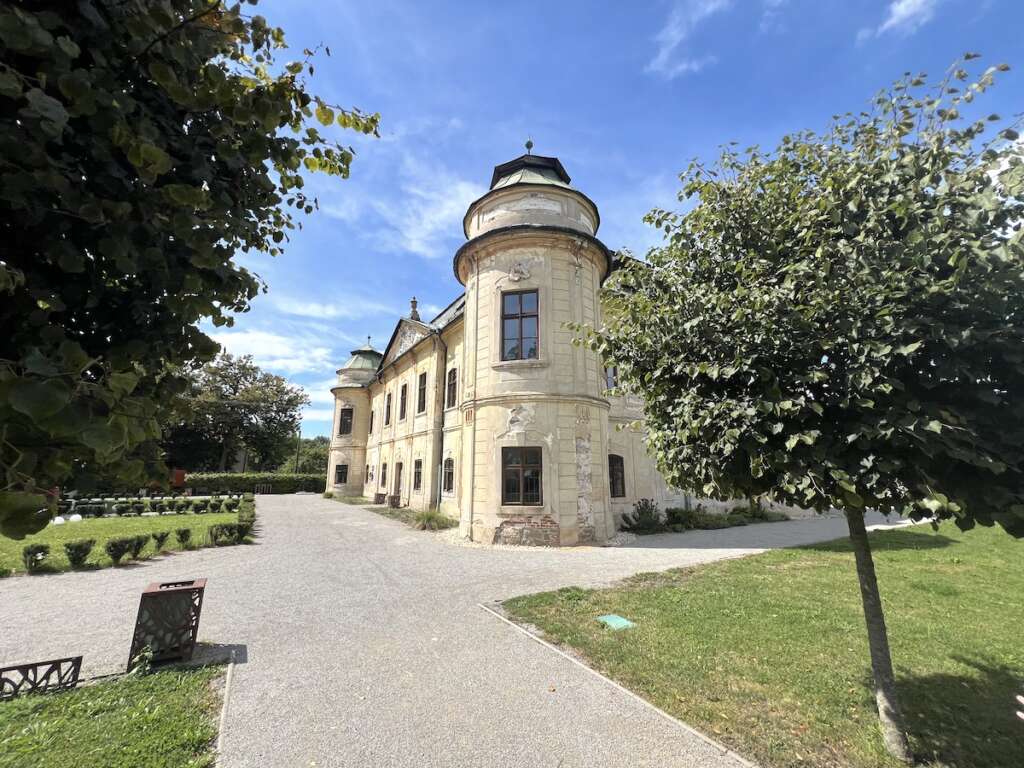
Is Hronsek Worth Visiting?
The church in Hronsek is one of those places that may seem modest at first glance but in reality holds tremendous historical and artistic value. It is not just a monument but a living symbol of the determination of the local community. Its proximity to Banská Bystrica and Zvolen makes it easy to include in any travel plan.
If you are interested in wooden architecture, Protestant history, or simply enjoy discovering lesser-known destinations, Hronsek is an excellent choice. It is a place where you can slow down, feel the atmosphere of past centuries, and experience the unique spirit that arises from the combination of faith, wood, and nature.



